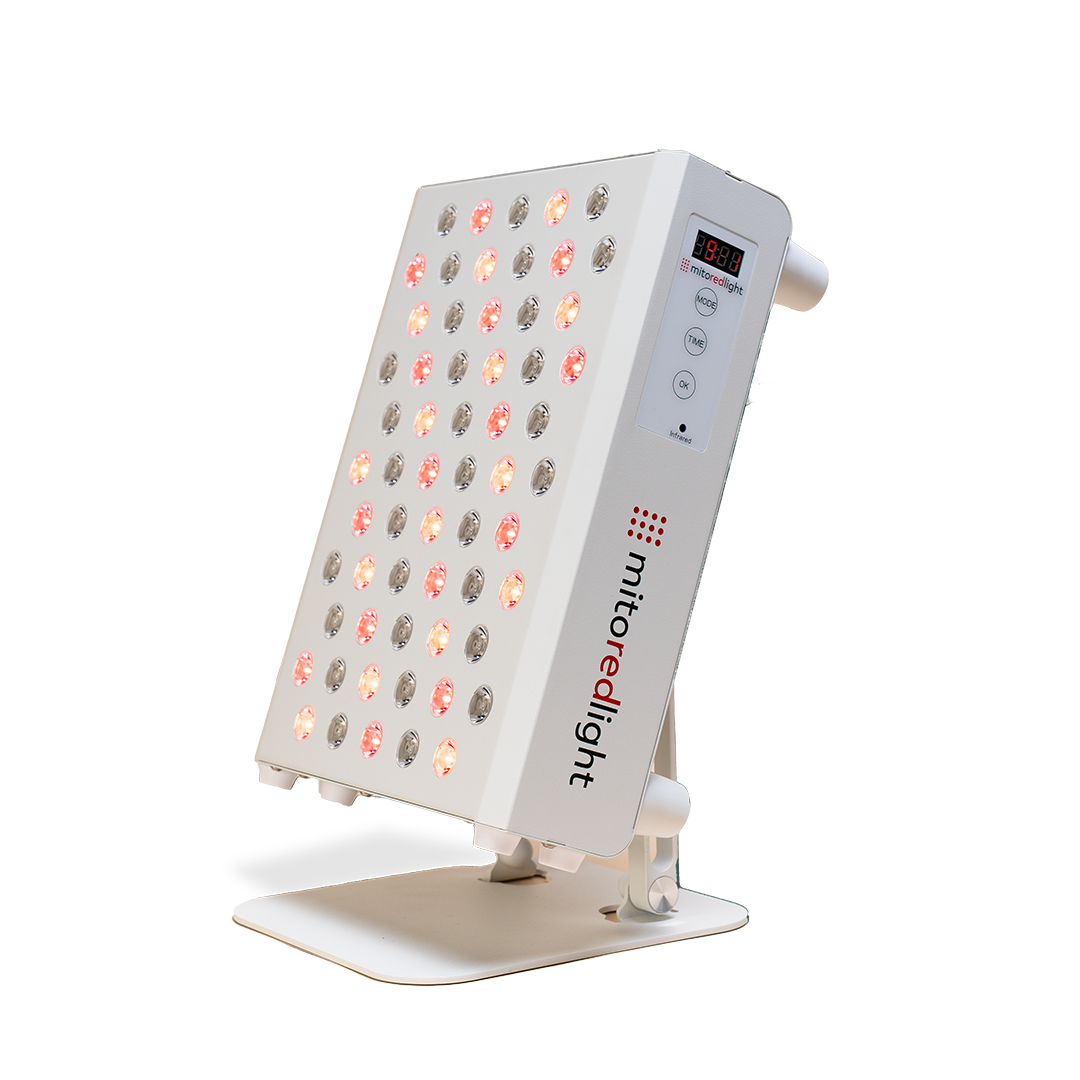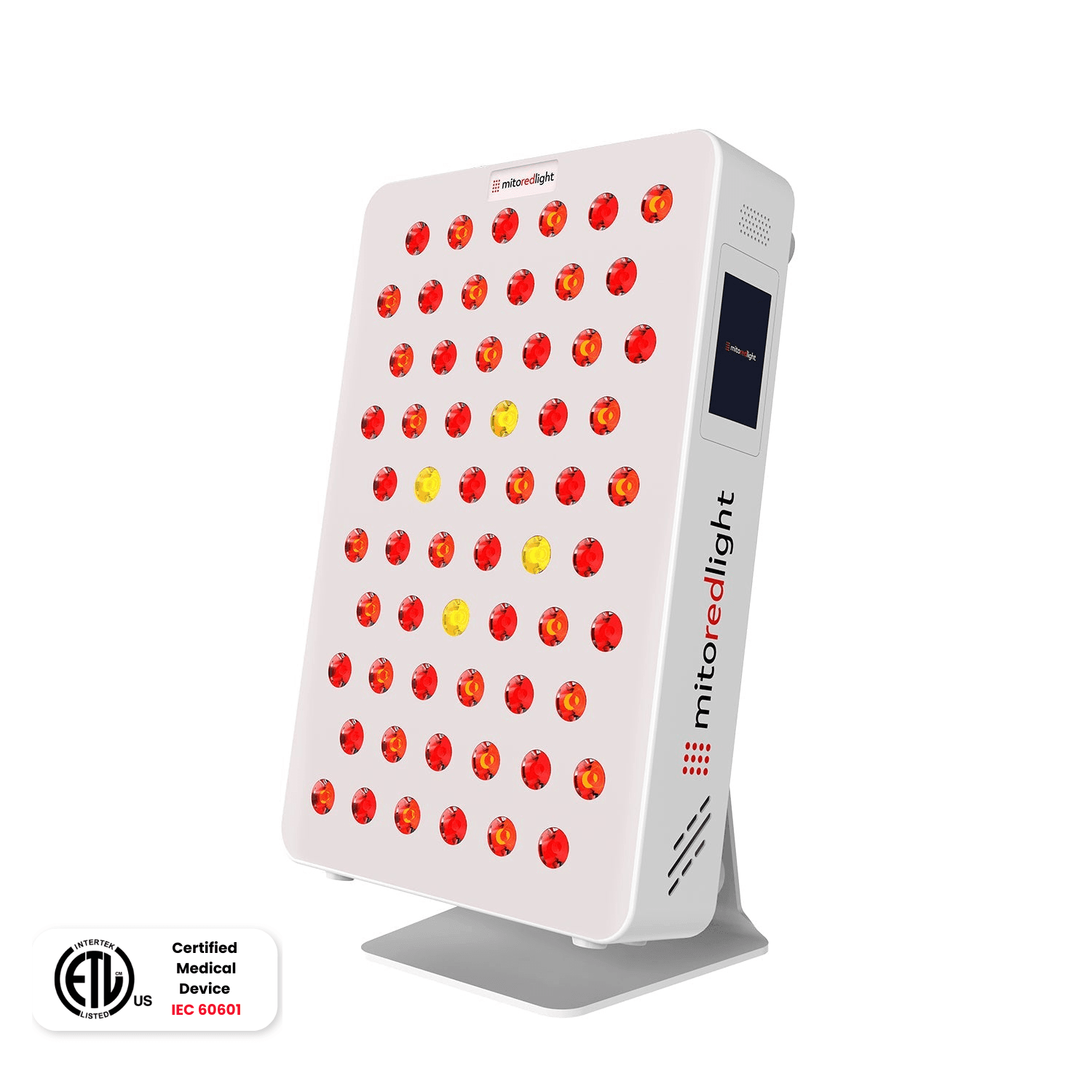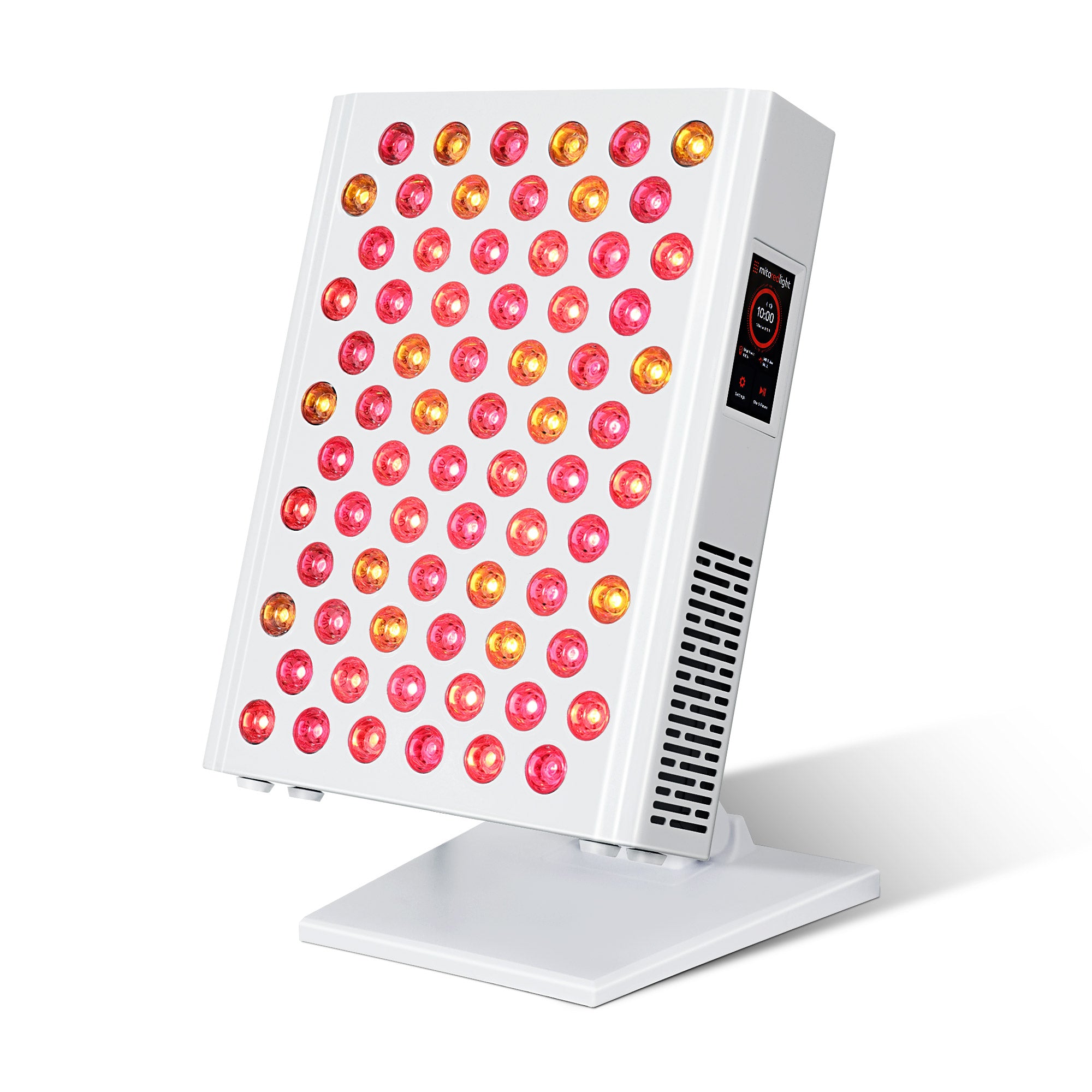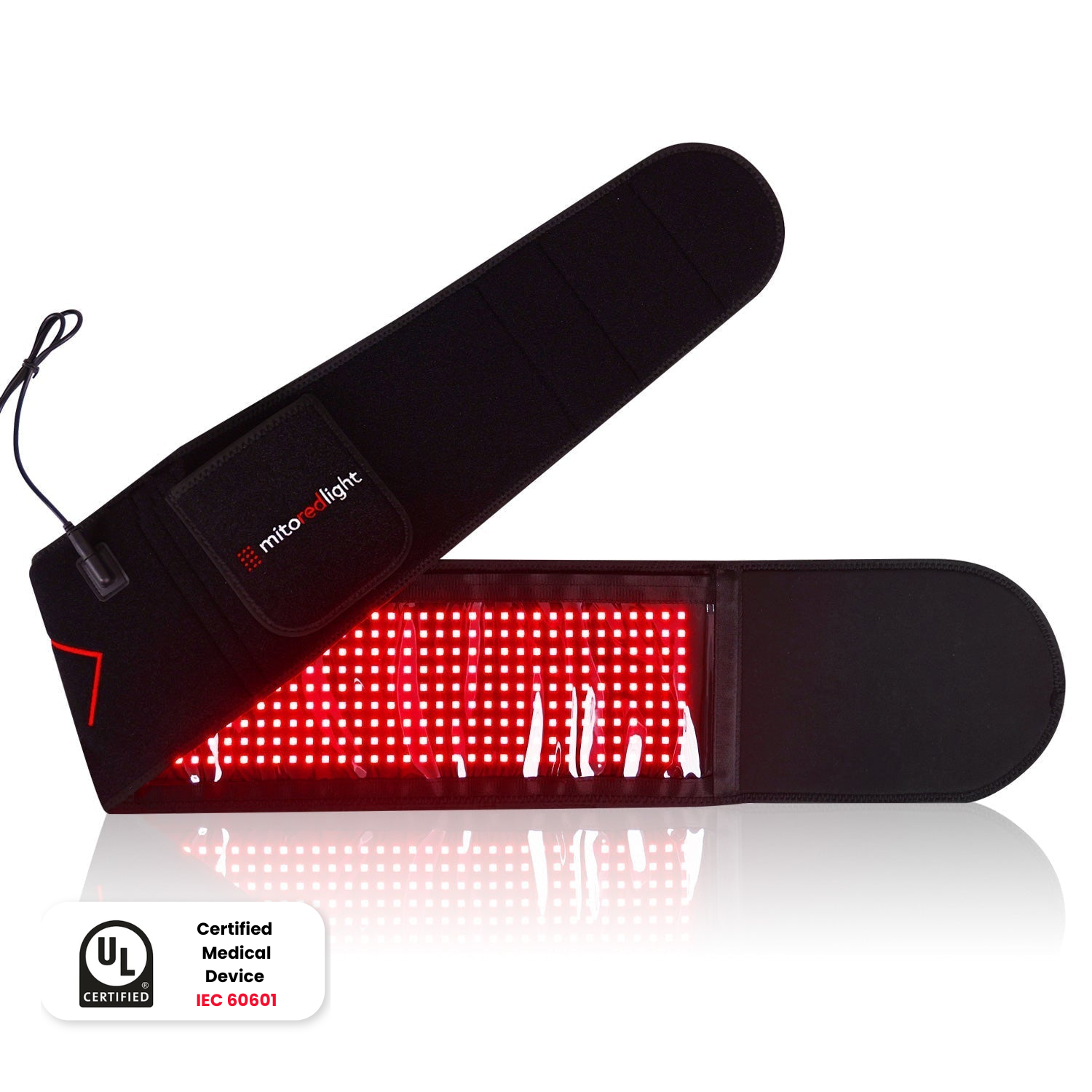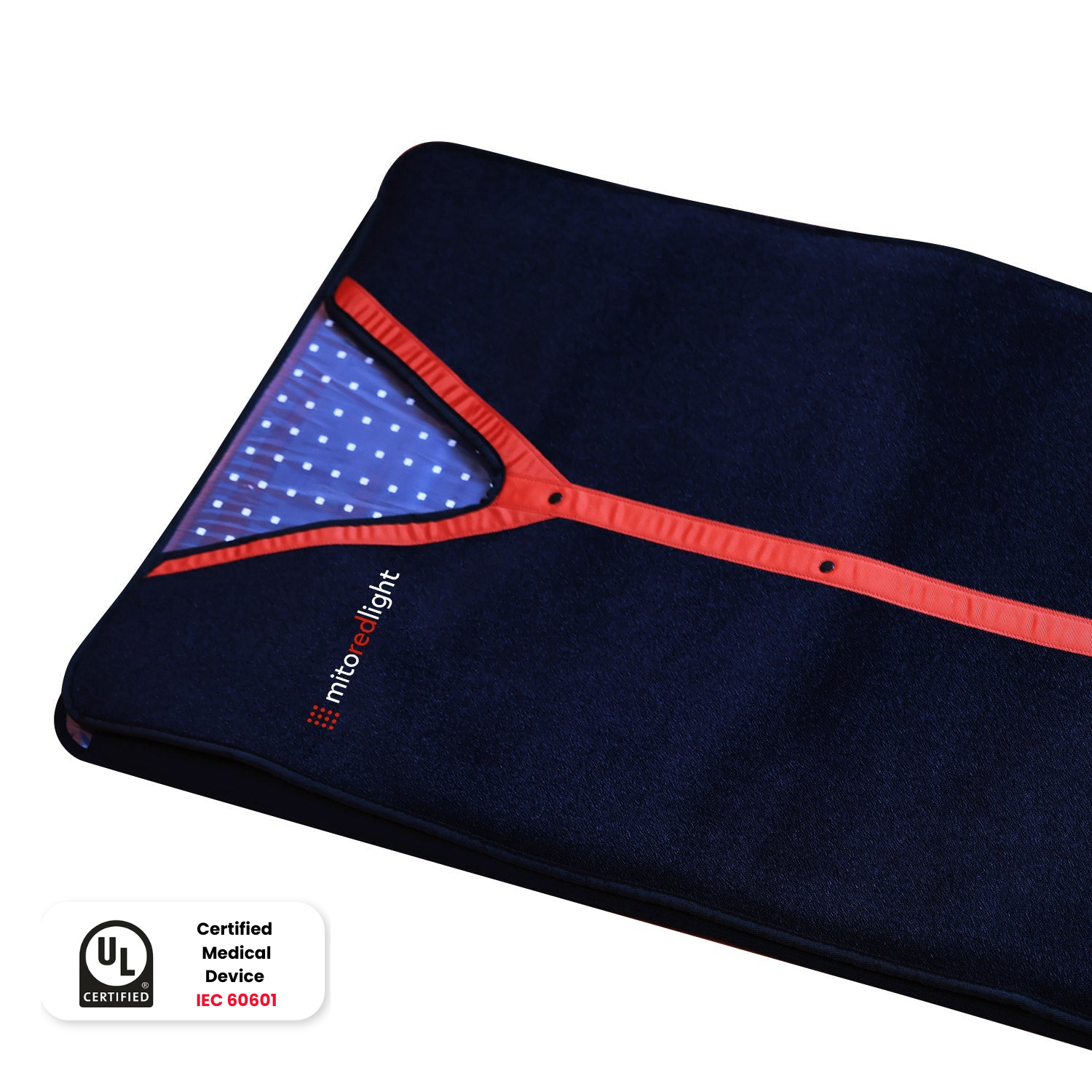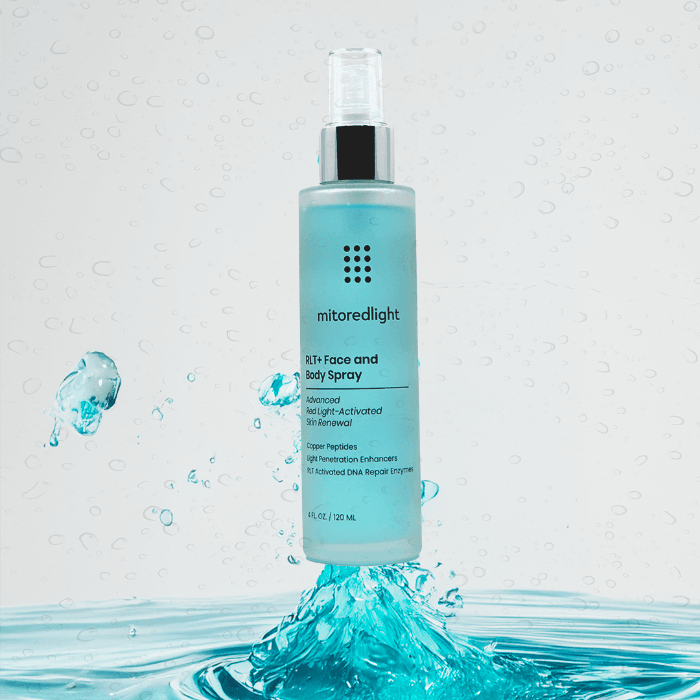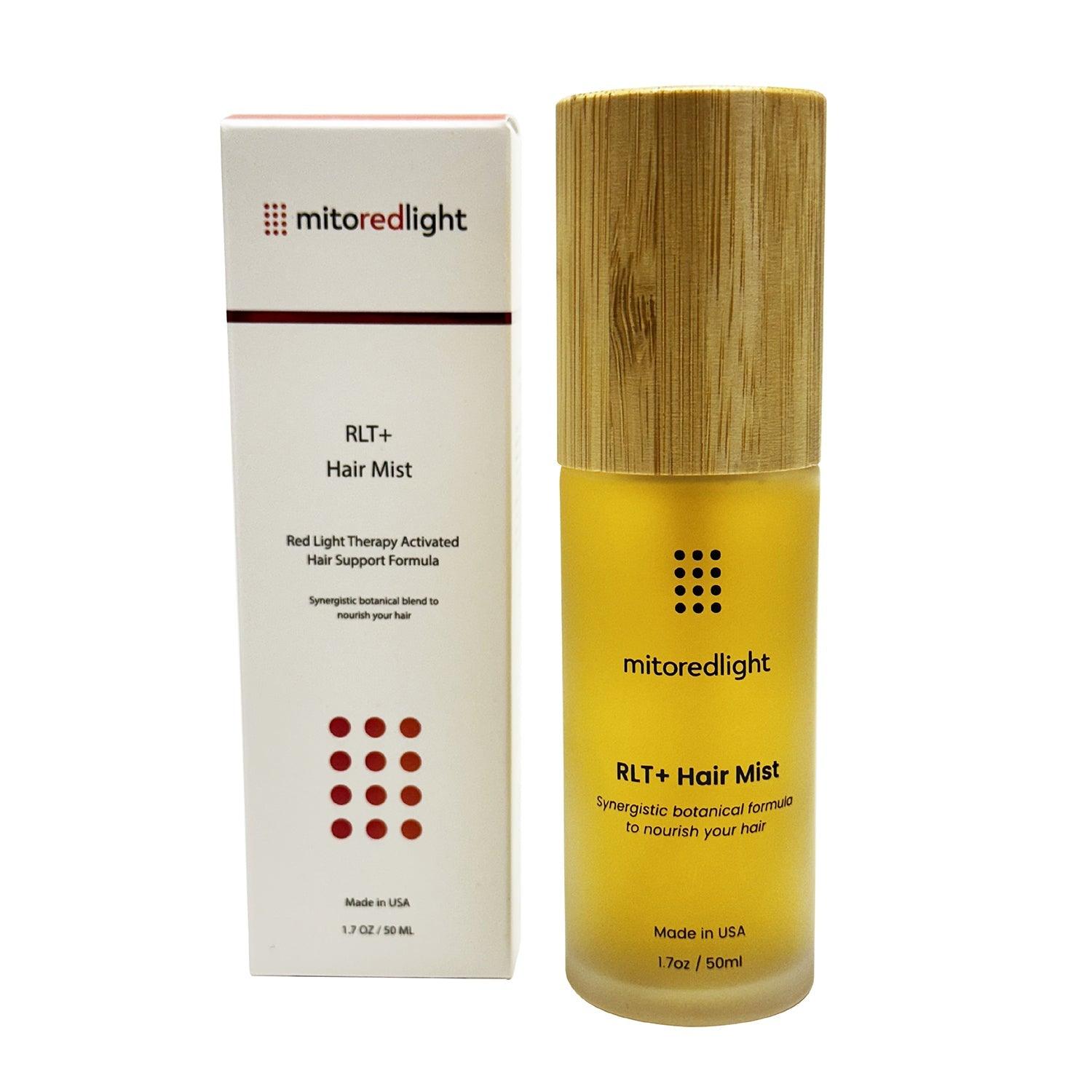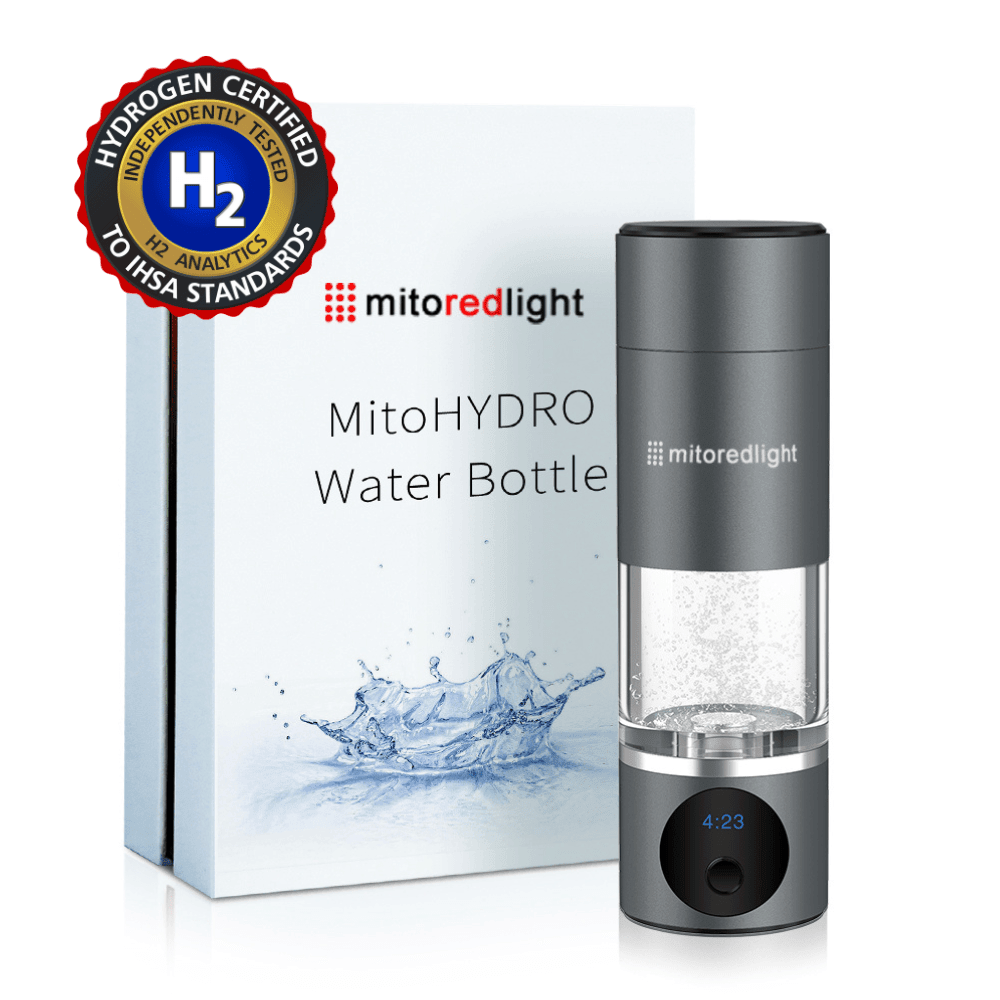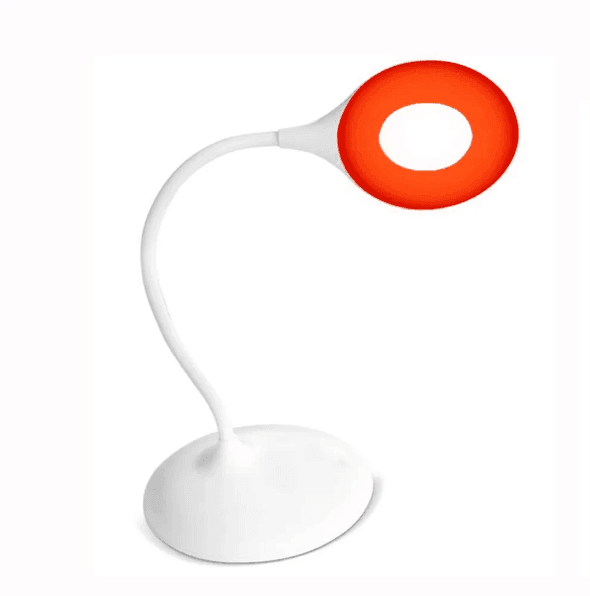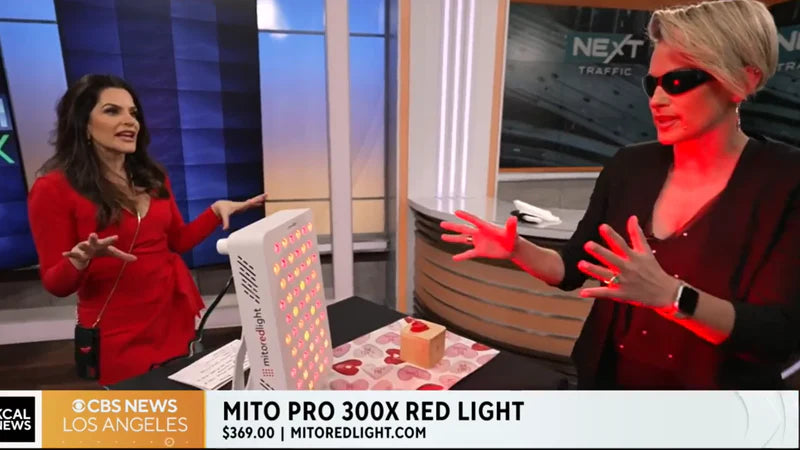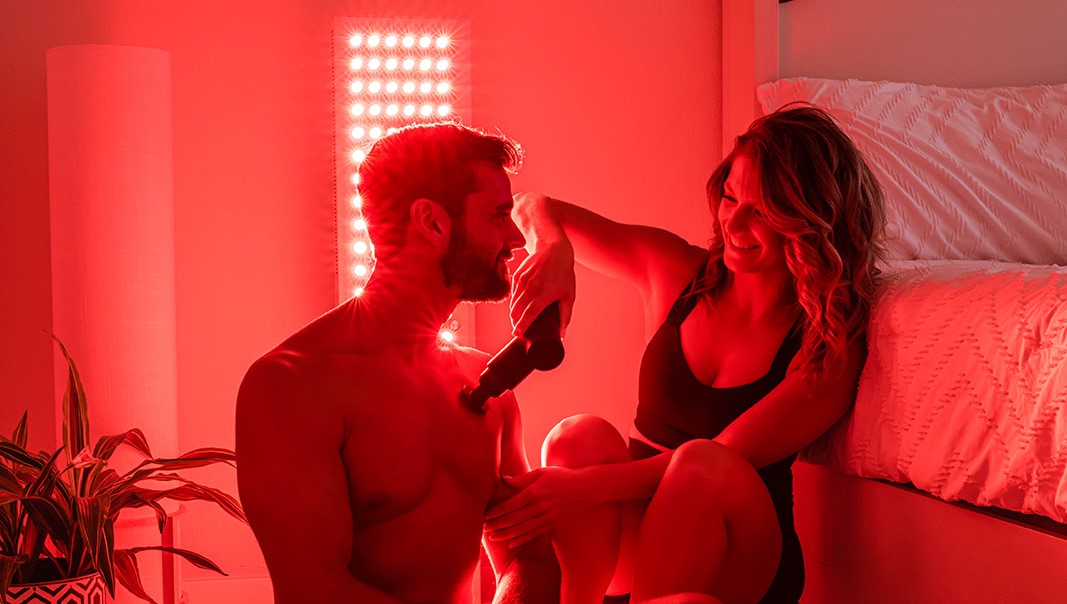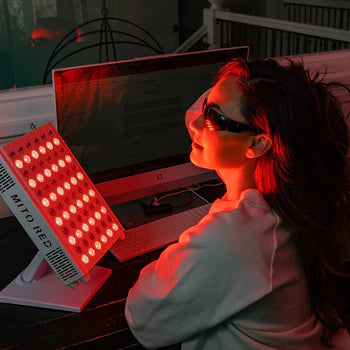DISCLAIMER: Mito Red Light devices are Class II wellness devices aimed at affecting the body through topical heating and supporting cellular function. The information provided in this article and on this site is for educational purposes only and is not intended to imply effectiveness of Mito Red Light devices for any specific application. The information provided in this article and on this site is not intended to diagnose, treat, cure, or prevent any disease, is not a substitute for consultation with a licensed medical provider and should not be construed as medical advice. Click here to read our article on potential contraindications of red light therapy..
Table of Contents
- Indications for Use
- Possible Hazards of Red Light Therapy
- Heat
- Light
- Tissue Stimulation
- Absolute Contraindications for Red Light Therapy
- Recent Burns
- Malignant Cancers
- Hyperthyroidism (Neck and Upper Chest Only)
- Epilepsy
- Pregnancy (Abdomen Only)
- Eye Disease (Eyes Only)
- Light Sensitivity
- Relative Contraindications for Red Light Therapy
- Fever or Infection
- Systemic Lupus Erythematosus (SLE)
- Severe Bleeding or Blood Loss
- Use of Photosensitizing Medications
- Additional Considerations for Red Light Therapy
Indications for Use
Mito Red Light Therapy devices are over-the-counter class II medical devices that emit energy in the red and IR spectrum intended to provide topical heating for the purpose of elevating tissue temperature for:
- Temporary relief of minor muscle pain
- Temporary relief of joint pain or minor arthritic pain
- Relieving stiffness
- Muscle spasms
- Promoting relaxation of muscle tissue
- Temporary increase in local blood circulation
Mito Red Light devices are not intended to cure or diagnose any medical conditions. Use of these devices help promotes healthy skin and overall health and wellness through supporting cellular function.
Devices are intended to be used by the user at home and in commercial environments.
Red Light Therapy Overview
Red light therapy uses red and near-infrared light (NIR) to stimulate mitochondria, a small structure found in each cell of your body. Mitochondria play an essential role in producing energy for the cell and are important for reducing inflammation.
Red light therapy, applied through the skin, penetrates deep into the body and is thought to have many beneficial effects. People use red light therapy to improve skin quality, manage minor pain, enhance performance, improve sleep quality, and many other reasons. Red light therapy may also be referred to as photobiomodulation or low-level laser therapy (LLLT).
Like anything else however, red light therapy should not necessarily be used by everyone. Those wanting to use red light therapy should be aware of any potential contraindications so that they can obtain RLT benefits as safely as possible.
Possible Hazards of Red Light Therapy
Before exploring conditions that may be contraindications to red light therapy, it is important to understand the potential hazards that red light therapy can create. Red light is a much lower energy form of light than other forms of light, like ultraviolet (UV) light, meaning that the energy it contains is less likely to cause harm than the more dangerous UV light. There are, however, still some potential hazards that should be considered.
Heat
Red light therapy must be absorbed by the body to create its effect. As light is absorbed by the body, this additional energy entering the body generates heat. While the minimal heating that red and near-infrared light therapy may cause is generally safe and unlikely to cause any harm, there may be existing medical conditions in which additional heat may not be desired.
Light
It may seem obvious, but red light therapy provides light. The energy that the light from red light therapy contains is quite low when compared to blue or UV light but it still may have a negative effect on parts of the body that are sensitive to light.
Tissue Stimulation
The whole point of red light therapy is to stimulate tissues in the body to bring about a desired effect. Some body tissues, however, may not benefit from the stimulation that red light therapy provides, especially when certain diseases are present. The stimulation that red light therapy provides may not be desired under some conditions.
Absolute Contraindications for Red Light Therapy
In medical terminology, absolute contraindications are factors under which a treatment should never be used. While some absolute contraindications for red light therapy may exist, it is important to note that red light therapy is a newer form of therapy that is still under research. Additionally, the FDA and other regulatory agencies have not outlined absolute contraindications for red light therapy.
Ultimately, contraindications for red light therapy are not set in stone; however, clinical knowledge combined with a growing body of research does provide several potential absolute contraindications.
Recent Burns
Any recent burn may retain the thermal energy that caused the damage for a period of time afterward. Depending on the severity of the burn, red light therapy may add heat to the overheated tissues, causing further thermal damage. Red light therapy should not be used on burns that occurred within the last 24-48 hours unless it has been cleared by the doctor providing treatment for the burn.
Malignant Cancers
Cancers that are actively growing, especially carcinomas, should not be exposed to red light therapy. Carcinomas are cancers that begin in epithelial tissues, commonly the skin, making them maximally exposed to the impact of red light therapy.
Red light therapy is used to improve the proliferation (replication) of cells in a wound. Encouraging cell proliferation could, theoretically, speed the growth or spread of cancerous cells. There is some research that suggests that red light therapy may be safely used in tissues that contain cancer, but this research is not conclusive. This 2018 review article by Hamblin et al. discusses the many complexities of this topic.
No one should use red light therapy on cancerous tissues without the permission of their oncologist.
Hyperthyroidism (Neck and Upper Chest Only)

When red light therapy is used over the neck and upper chest, it is likely that light will reach the thyroid. Increased stimulation of the thyroid may cause a worsening of symptoms caused by an already overactive thyroid. Those with hyperthyroidism should not use red light that may reach the thyroid without the permission of their endocrinologist.
Epilepsy
People with epilepsy may be at risk for having a seizure when using red light therapy, especially when poor-quality red light panels are used. Inherent to almost any light source is a phenomenon called flicker. Flicker can be invisible to the eye, but causes rapid fluctuation in the intensity of light. People with epilepsy may be susceptible to flicker in red light panels and could experience a seizure if the flicker is severe or if they are particularly sensitive. At Mito Red, we use flicker free drives to remove the flicker from our panels. You can read our article on flicker for more information.
Pregnancy (Abdomen Only)

While research shows that it is very unlikely that red light therapy negatively affects pregnancy, many sources consider it to be a contraindication to red light therapy. Red light therapy artificially alters the function of mitochondria in a way that is intended to improve their function. While this could be beneficial to a developing child, the effects are not fully understood.
Development during pregnancy involves a delicate balance of many complicated biological processes. Anything that could potentially affect this process should be approached with great care. For this reason, red light therapy during pregnancy should generally be avoided if it could reach the developing fetus.
Eye Disease (Eyes Only)
The effects of red light therapy on the eyes are still under research, with some research showing that it provides health benefits to the eyes. Its effect on the eyes, however, is still being researched. The eyes are obviously quite sensitive to light, and most red light panel manufacturers err on the side of safety, recommending that users shield their eyes (with goggles or special glasses) from the red light panels while using them.
While the effect of red light therapy on healthy eyes is still being investigated, it should never be used on those who have an eye disease unless they are explicitly given permission to do so by their ophthalmologist.
Light Sensitivity
There are very rare conditions in which someone may have a sensitivity to light. Conditions like solar urticaria can cause allergic reactions when the skin is exposed to sunlight or intense light within a particular wavelength, regardless of the source. Those who have previously experienced sensitivity to light or have any kind of reaction when using red light therapy should not use this form of treatment until they have been cleared to do so by their doctor.
Relative Contraindications for Red Light Therapy
Unlike absolute contraindication, the medical term “relative contraindication” means that a treatment should generally be avoided because the benefits are unlikely to outweigh the risks. These contraindications are relative, and there may be times where the benefits to using the treatment will outweigh the potential downsides. It is always wise to check with one’s doctor prior to using red light therapy if a relative contraindication exists and to use lower levels of intensity until the effects of red light therapy become apparent.
Fever or Infection

During fever and infection, the body temperature is elevated. There is a risk that the increased heat created by red light therapy may contribute to temperature elevation throughout the body. However, this risk is relatively benign, as it is unlikely that the heat created by red light therapy will significantly raise body temperature during a fever. Someone who has a severely elevated body temperature should discuss the risks and benefits of red light therapy before using it.
Systemic Lupus Erythematosus (SLE)
Systemic lupus erythematosus (SLE) is an autoimmune condition in which the body’s immune system attacks connective tissue through the body. People with SLE may be more susceptible to damage from light, with a skin rash caused by sunlight being common with this condition.
While SLE may increase the likelihood of skin sensitivity to light, red light therapy may not cause this problem and may help with symptoms of SLE. Those with SLE should discuss the risks and benefits of red light therapy with a doctor prior to using it and should start with low-intensity treatments until they know how they will respond to it.
Severe Bleeding or Blood Loss
There is some research to suggest that red light therapy may slow the body’s ability to stop bleeding. This effect is quite small, but may be important when severe bleeding or blood loss has occurred. While research in this area is still ongoing and the extent of the effect of red light on bleeding is not fully understood, red light therapy should not be used when serious bleeding is occurring unless it has been cleared by a doctor who is helping to treat the bleeding or blood loss.
Use of Photosensitizing Medications

Many medications may increase sensitivity to light. This could cause red light therapy to irritate the skin or lead to a rash when using red light therapy. While it is unlikely that red light therapy will meaningfully affect those using photosensitizing medications, it is best to check if the medicines you are taking can increase your sensitivity to light and to consult with a doctor before using red light therapy if you are using one of these medicines.
Additional Considerations for Red Light Therapy
While not contraindications, there are also some additional considerations for people using red light therapy. These considerations are not reasons not to use red light therapy, but are factors that are likely to impact it or be impacted by it. Additional considerations for red light therapy include:
- Tattoos - Tattoos, especially ones that use red ink, may be prone to fading when exposed to intense red light. The tattoo ink may also cause uneven absorption of red light, causing therapy to be less uniform.
- Dark skin pigmentation - The effect of skin pigmentation on red light therapy is still being studied. Those with darker skin tones may find that their skin absorbs more light, making it warmer than those with lighter skin tones would experience. A smaller amount of red light may actually reach deeper tissues, however, this effect is not likely to be large.
- Dark hair - Darker colors of hair may absorb more light, causing increased warmth and decreased penetration of red light. This effect is not likely to be large.
- Melasma / Hyperpigmentation - Our own product study showed improvement from red and NIR light on hyperpigmentation, particularly when paired with a high antioxidant serum. However, in rare instances users can experience the opposite effect. We suggest starting slowly and using red light only if this is a concern. A detailed discussion of this can be found in our article: Red Light Therapy & Hyperpigmentation
- Retinol - can make your skin more sensitive or delicate due to increased cell turnover - it may cause some temporary irritation or dryness when paired with red light therapy. If you use skincare products with retinol it is recommended to use them in the evening and use red light during the day.
Mito Red Light

At Mito Red Light, we are committed to ensuring your safety while using red light therapy. Our products are designed with safety and effectiveness in mind, enabling you to receive red light therapy in the safest way possible while maximizing its effects. We welcome you to review our selection of high-quality red light therapy devices or to contact one of our helpful representatives at +1 866-861-6486. For commercial products visit our excusive commercial product partner here.
Related Articles:
